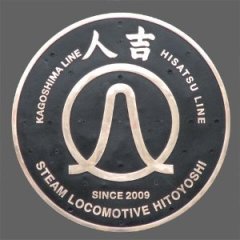Search the Community
Showing results for tags 'electric locomotive'.
-
Freelance keiben locos and rolling stock in H0e. Warning: contains extensive kitbashing, scratchbuilding and a general inability to open a box of model railway products without turning the contents into something new. Let's start with some existing/completed things. The Blue Beast started out as two of those little blue caricature locos produced by Tomytec that came with a tanker wagon. I had thought that they could be made to look sensible by putting them on bogie chassis instead of the intended four wheelers but that only made them look worse. So I grafted the two bodies together and mounted them on a Kato EF65 chassis with the middle bogie taken out. The whole fiction is vaguely justified by the similar looking locos used by the Nagaden for heavy freight traffic, albeit on 1067mm gauge. A loco of this size, or with double cabs, is admittedly rare on Japanese 762mm gauge. It is a very nice runner though. Generic keiben bogie wagons. These actually use the body from a British 009 plastic kit (War Department field railway D type) mounted on more appropriate bogies. Scratchbuilt ToFu made from all sorts of bits and pieces. Like several of my early freight wagon scratchbuilds, the planks are too small because I had only undersize 1mm or very oversize 2mm planked sheet and did not know of a source of more appropriate 1.5mm planked sheet (subsequently found from a US supplier). It's inspired by the larger of the two ToFu on the Kusakaru Keiben. I usually have several different items in build at once at various different stages of completion, like this: The coach on the left was built before I acquired a Silhouette cutter for more accurate shaping of plasticard parts and so is rather wobbly compared to later creations. The body parts for the smaller of the two four wheelers in the picture above, fresh off the cutter. Do let me know whether or not this sort of modelling is of interest. It is admittedly rather different from the normal kind of modelling on this forum.
- 28 replies
-
- 16
-

-

-
- keiben
- local line
-
(and 3 more)
Tagged with:
-

numberplates Japanese Locomotive Numberplates (ナンバープレート)
SL58654号 posted a topic in Japan Rail: News & General Discussion
I've always admired the brightly polished brass number plates on steam locos and the bright numerals of plates on diesels and electrics in Japan as well. All locomotives in Japan usually had four number plates in all on each side. Correct me if I'm wrong, but instead of number plates American locomotives usually just had their numbers painted on. They are pieces of railwayana that easily distinguish which railway a locomotive belonged to because of their distinctive design (much like how identifiable plates from British or South African locomotives are). Maker's plates I've always liked too, and there are numerous design based on the several different locomotive manufacturers who've supplied Japan with its locomotives throughout its rail history. I have just a cardboard replica of locomotive 58654's number plate in given to me by a Japanese friend who equally loves the SL Hitoyoshi. Does anyone on this forum collect full-sized replicas made of brass or indeed original Japanese locomotive number plates themselves? I'm not planning on collecting any (so far) but I'd like to hear from others. Also, why were some Japanese SL number plates red, green, blue, brown etc.? Why the difference?- 28 replies
-

Air Whistles on Japanese Locos (ホイッスル)
SL58654号 posted a topic in Japan Rail: News & General Discussion
I've asked small queries about smaller but still interesting railway materials and apparatus, such as tablets and numberplates, but one thing I've always like about Japanese diesels and electric locomotives (DL and EL, as I like to call them), is their supposedly unique tendency to sport air whistles that make a nice, spine-chilling shriek instead of air horns that sound like a goose with a bad frog in its throat. A classic air whistle of choice for JNR diesels and most electrics seems to be the AW-2, which is my favorite, as it's used by the DE10, including the ones owned by JR Kyushu. Did any other countries use similar warning signs on their modern locomotives? I can't think of any.- 5 replies
-
- diesel locomotive
- electric locomotive
-
(and 1 more)
Tagged with:
-

Meitetsu DEKI 600 locomotives retired
miyakoji posted a topic in Japan Rail: News & General Discussion
On July 21st, Meitetsu's four DEKI 600 electric locomotives were moved to Meiden-Chikkō Station for scrapping. Interesting facts from the English Wikipedia article: Built between 1943 and 1945 by Toshiba 603 and 604 were not originally for Meitetsu; they were intended to go to Hainan Island, but couldn't be shipped there. 601 and 602 were based at Inuyama, 603 and 604 at Shinkawa they weighed 40 tons and were rated at 440kW (about 590hp) These were basically surplus after the arrival of the new EL120s. Meitetsu's other old locos, the two DEKI 400s, will also be retired. http://railf.jp/news/2015/07/24/130000.html http://en.wikipedia.org/wiki/Meitetsu_DeKi_600 a year ago, still in service, by kanazawa10026: https://www.youtube.com/watch?v=Djm6NOyKMik end of the line, literally and figuratively, also by kanazawa10026: -

new Meitetsu electric loco, replacement for ED79, etc?
miyakoji posted a topic in Japan Rail: Pictures & Videos
In this thread, it's claimed that the photographed loco is a new Meitetsu DEKI. Another poster says it's a replacement for the ED79. I can't tell if this is a joke or not, nor can I tell if the photo is a 'shop. It doesn't seem to be one half of an EH800. This is at the test track of Toshiba's Fuchu factory. http://rail-uploader.khz-net.com/index.php?id=35010


